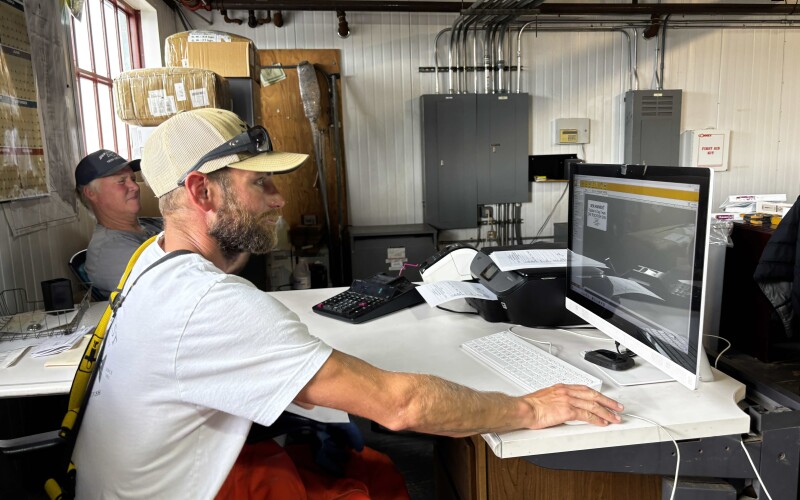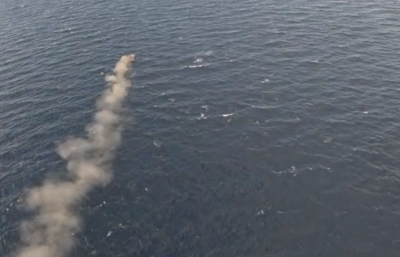It’s 3 a.m. and has been spitting rain over Monterey Bay. The rain passes, and all is quiet in the harbor at Moss Landing, Calif., except for the purring of two 225-hp Honda outboards on the stern of the 27-foot F/V Persistence.
“It’s my cousin Nick Taron’s boat,” says Calder Deyerle, as he and another cousin, Hunter Palmerí, cram the boat with barrels of ice and racks of hooks. “Because of the way we hold quota we have to switch boats around.”
With the deck packed, Deyerle heads out of the harbor on the hunt for black cod, also called sablefish. He keeps an eye on his radar and plotter as he navigates through the fog and darkness out into the long swells rolling onto shore. “I went surfing the other day,” he says. “With three kids I don’t get as much time as I used to.” At 36, Deyerle has been fishing out of Moss Landing since he was a child going out with his father. “I started on my own when I was a sophomore in high school,” he says.
He has a good mental map of the bottom, and throttles back about six miles offshore. “This is the closest place we can fish,” he says. “We’ll set on some mud and then up a steep cliff and across some ridges. You have to be careful how much tension you put on the line, or you hang it like a clothesline between the ridges.”
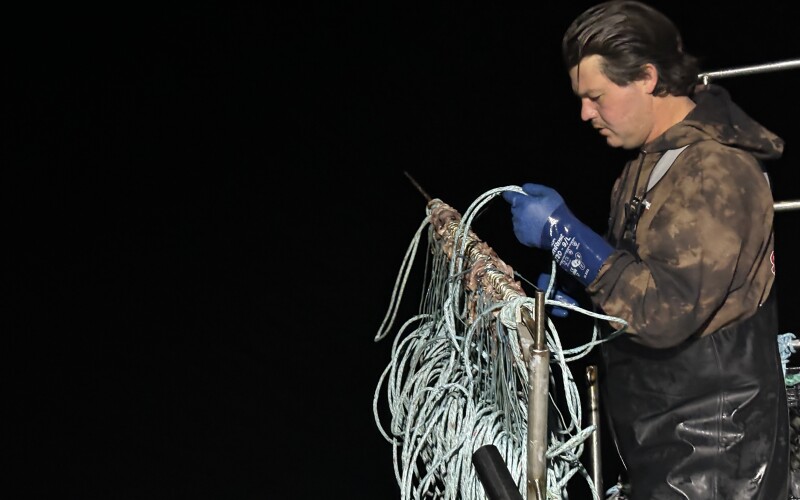
Palmeri has the end buoys and high-flyer ready and launches them out into the dark. “We’ve got streamers to keep the birds off,” says Deyerle, noting the dilemma for many longliners when birds dive for the bait and get hooked. “But we almost never set in daylight, so it’s not a problem.” After a barrelful of endline snakes into the sea, Palmeri drops a concrete anchor over the side, cleating it off as Deyerle stretches the buoy line. Palmeri fits a rack of baited hooks and groundline into a holder aft on the starboard rail and fastens one end to the anchor with a C-link. “We use 12/0 hooks,” says Deyerle. “They baited them with squid three days ago and stored them in the cooler. It should be alright.”
“Okay?” Palmeri calls.
“Let it go,” Deyerle says after a minute, and waves the go-ahead to Palmeri. As the anchor sinks, the hooks and line start to fly off the rack.
Deyerle’s father, Richard, and uncle, Daniel own Sea Harvest Fish Markets in Moss Landing and Monterey to the south, and buy from the family’s five boats, as well as others. “There’s an old Vietnamese guy who takes care of the baiting,” says Deyerle. “Everything I know about longlining I learned from the Vietnamese here.”
Palmeri cleats off the first line of hooks and loads another rack while Deyerle puts some tension on the line. “I put more tension on in the beginning and then ease up a little toward the end,” he says. Palmeri connects the line with another C-link and lets it go. “We set 14 racks, there’s 250 hooks to a rack, 18 inches apart. Do the math and that tells you how much line we have out.” It adds up to almost a mile.
About halfway through, Deyerle calls out and throttles back. “A trap set! I saw that on the radar and thought it was birds. Hold on. Watch that line on the motors, Hunter.” Deyerle makes a turn, dragging the line in the water southeast to get away from the black cod traps. He moves his gear to his satisfaction and he and Palmeri resume setting. “Hopefully we got away from it,” he says.
Once all the racks are set, Palmeri and Deyerle hook up another anchor and end line with buoys and a high-flyer. “Now we sleep,” says Palmeri, and he stretches out on deck with nothing but his Grundéns for a mattress and blanket.
“Like the Vietnamese,” says Deyerle. “Set the gear, then sleep.”
Daylight slowly sifts through the fog and clouds, and after a two-hour soak, Deyerle and Palmeri get ready to haul. They lash four 55-gallon barrels to the port rail and Palmeri starts to fill them with water while Deyerle climbs onto the roof to start the Honda hydraulic pump. “It’s made by Warren Junes,” Deyerle says of his 15-inch hauler. “He supplies the haulers for most boats around here.”
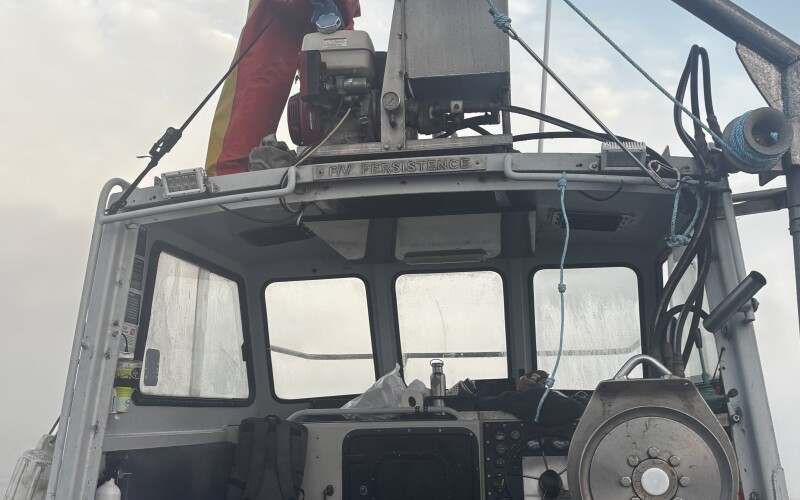
Today the plan is to land live fish for the Chinese market, and Palmeri prepares the barrels to keep the fish alive. “I call this redneck RSW,” says Deyerle. “They each have a block of saltwater ice in them, then we fill them halfway with seawater, it makes it very cold, and with the air, we get about 90 percent survival.” He notes that the live market pays three or four times the $1 a pound they get for dead black cod.
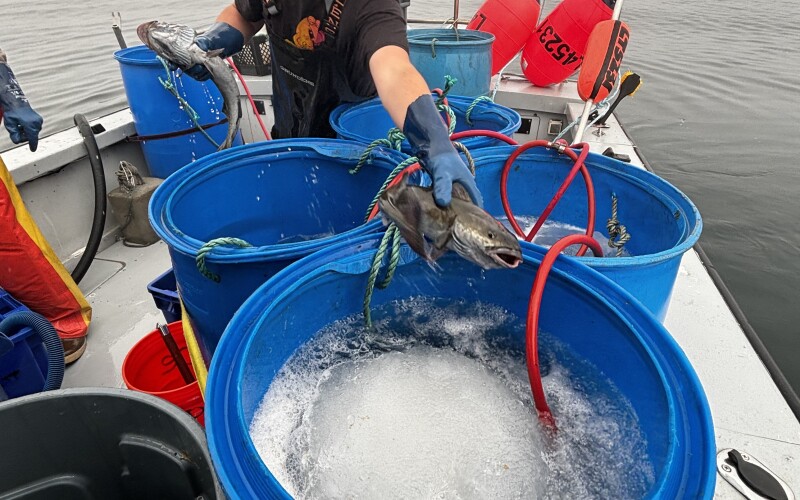
The end line is a long time rising from the depths; it’s 5/16ths poly and Deyerle likes to stretch it well before making it up as a section of longline. “We set in 400 fathoms,” says Deyerle. “We might have gotten over into 200 when we made that turn, which means smaller fish. But that’s okay, they like the small ones, they seem to stay alive better.” The line rises very tight and Deyerle wonders if he’s caught the traps. “We’ll haul one and see how it goes,” he says.
The first 250 hooks yield well. “This is looking good,” says Deyerle as he quickly fills a tote and slides it over to Palmeri.
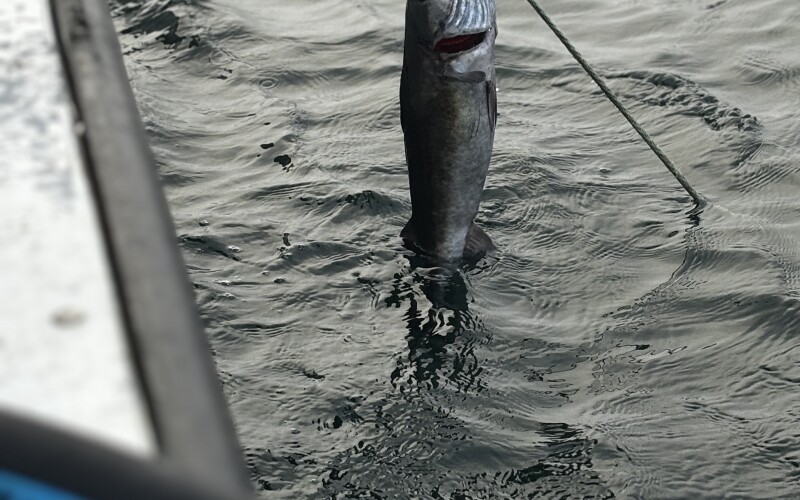
“I count the fish,” says Palmeri. “He doesn’t trust me so he gives me a clicker.” Palmeri pulls fish two at a time from a tote full of seawater and tosses them into a barrel. “How many to a barrel?” he asks his cousin.
“Sixty-five,” says Deyerle.
“Sixty-five?”
“Sixty-five,” Deyerle repeats. “About 200 pounds a barrel.”
As Palmeri pulls fish from the tote he checks them to see if they have been hooked in such a way that they will likely bleed out and die in the barrels. “If they get hooked in the gills of tongue it’s no good,” he says as he tosses damaged fish into an empty tote.
The fish come fast and the hooks and line fill barrels that will be sorted and baited back at Sea Harvest. Occasionally they get a shortspine thornyhead, or a black gill rockfish that they throw in a barrel separate from the black cod. “We never take those thornyheads home to eat,” says Palmeri. “They’re worth $9 a pound. I never tasted one.”
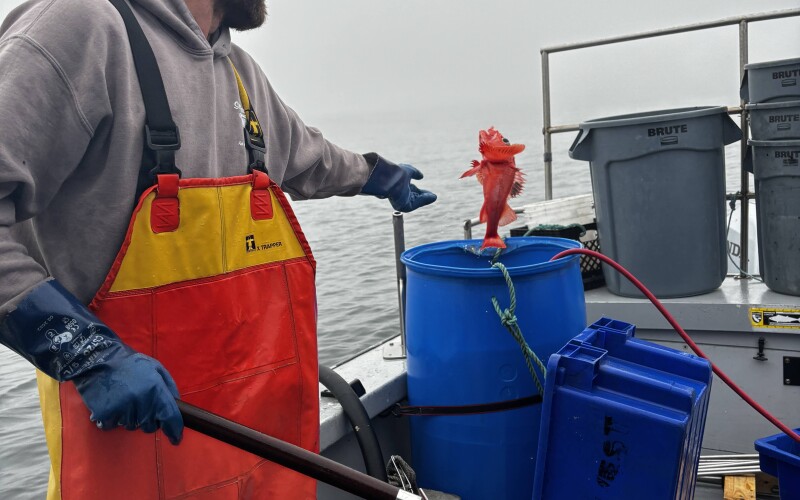
“I think we missed that trap set,” says Deyerle. But the line grows tight and gets pretty thin. “We’re hung on something,” he says to Palmeri. “Let’s buoy this off and try the other end.”
They put two buoys on the snagged line and run back for the other high-flyer. “I love when we do this,” says Palmeri. “This way when we get to the end of the hooks we’re done. We don’t have to haul this end.”
Deyerle gets the line tight and manages to haul it off the snag. “Luckily I went the right way with it,” he says. The fish keep coming and Deyerle and his cousin have filled five barrels and then some. Nearing the end of the set, the fish are more beat up and not likely to survive; some are shark bit and near the last hooks. Deyerle hollers, “Got a blue shark! There’s the one that’s been getting us.” The shark is tangled and foul hooked, but near the surface it breaks free and swims away to torment the fishermen another day.
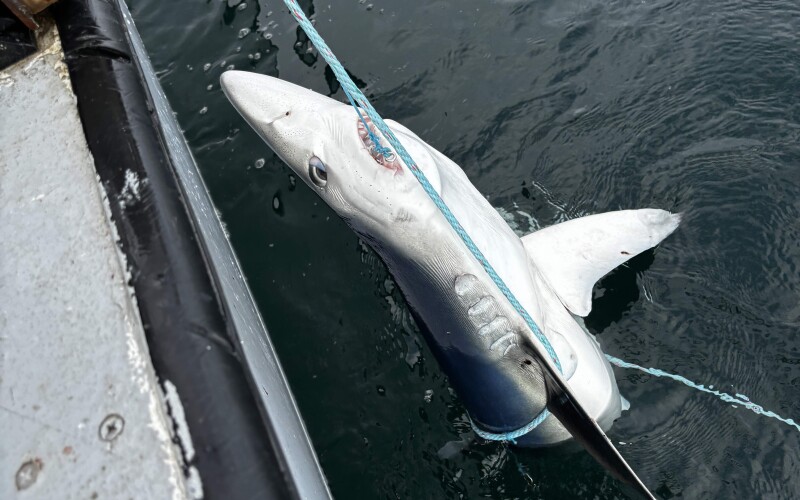
Heading back in past Monterey, the Persistence passes the newly refurbished Western Flyer, the vessel made famous by writer John Steinbeck and biologist Ed Rickets with their 1940 voyage to the Sea of Cortez. “I missed the boat parade,” says Deyerle.
Back in Moss Landing, a largely Mexican crew unloads the barrels into 500-pound totes of seawater. Deyerle speaks to them in Spanish and learns that there is no market for live fish today. But Sea Harvest manager Andreas Jacobo Bellos assures him that they can keep the fish alive until tomorrow, when they will have market.
Inside the plant, the baiting crew is already busy, and a woman is putting the rockfish in the retail case. Upstairs, Deyerle finishes his day on the computer, reporting his catch and logging his weight. “One thousand twenty-five pounds,” he says. Not bad – and done before noon.
